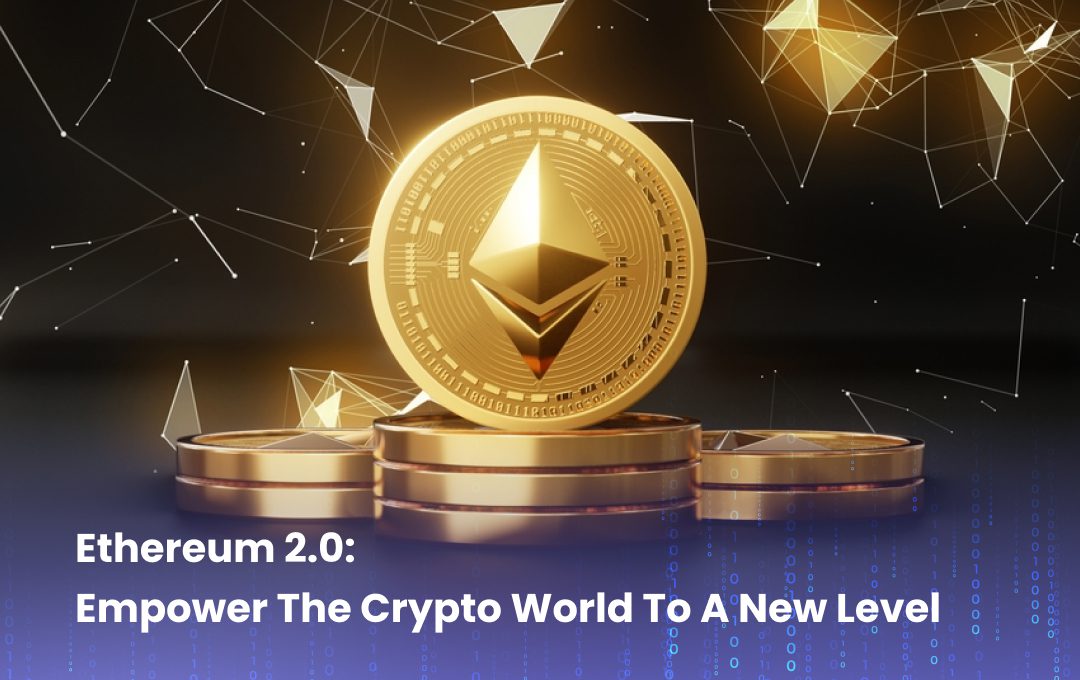It can’t be denied that Blockchain has become a dominant technology and revolutionized global markets over the past few years. Blockchain use cases range remarkably from Finance, Education, Healthcare to Retail, Manufacturing, and Logistics. However, the rising demands also caused problems with protocols such as Ethereum - the second-largest cryptocurrency. For example, due to the high demand for blockchain transactions, the gas fees required to power them have become extremely expensive. At the same time, the algorithms of the blockchain are proving inefficient and slow. As a result, the next major revision of the Ethereum crypto network, called Ethereum 2.0, is called for addressing the issues. It will have several improvements, the most notable of which is the switch from a proof-of-work (PoW) consensus mechanism to a proof-of-stake (PoS) model. Excited to learn more about this topic? Let’s keep reading!
1. What Is Ethereum 2.0?
Have you ever heard about the “Blockchain Trilemma”? This term refers to three important characteristics of blockchain, which are decentralization, scalability and security. However, no blockchain network, including Ethereum, can provide all three at the same time. The current Ethereum system appears to prioritize the latter two.

Blockchain Trilemma
Ethereum 2.0, also known as Serenity, has been developed in response to the demand to update to the existing blockchain network. Its aim is to make Ethereum simultaneously more scalable (with an ambition of supporting thousands of transactions per second), secure, and sustainable – all while still remaining decentralized. The improved version contains some key structural and design modifications, with "proof of stake" and "sharding" being two of the most significant.
2. What Are The Problems With The Current Ethereum Network?
To understand the need for Ethreum’s upgrade, let’s take a closer look at some key issues of the current network:
- High gas fee: Gas is the term for the amount of ether (ETH) – the Ethereum native cryptocurrency – required by the network for a user to interact with the network. The gas price depends mostly on the demand for resources on the Ethereum network. The higher the demand, the higher the gas fees. The more gas someone is willing to pay, the faster the transaction will be executed. As a result, the Ethereum gas fee might become excessively expensive, with the cost of executing a transaction sometimes exceeding the value of the token being exchanged.
- Power usage: Ethereum currently employs a Proof-of-Work consensus mechanism. To verify a transaction, miners must solve hard mathematical puzzles. This can be a very energy-intensive procedure, especially when the processing power utilized by miners who didn't solve the problem is wasted.
- Network congestion: This is yet another concerning issue with the Ethereum Blockchain, which can only handle about 30 transactions per second at the moment. Because of the congestion, the complexity of applications that may be performed on the Ethereum network is limited.
- Disk space usage: The size of Ethereum ecosystem grows leads to the difficulty in running a node as the Ethereum blockchain history takes up more disk space. This restricts who can run a complete node (by raising the cost), hence limiting the number of nodes on the network.
3. The Superior Of Ethereum 2.0 Compared To Ethereum 1.0
a. Proof of Stake
As mentioned before, the Proof-of-Work model consumes a lot of energy, which is both inefficient and harmful to the environment. As a result, Ethereum 2.0 will adopt the Proof-of-Stake model. If you're wondering, "What is proof of stake?" It's a method that works by selecting validators based on the amount of cryptocurrency they own. Other validators can then attest to seeing a block. A block can be added to the blockchain once there are enough attestations. Validators are then rewarded for the successful block proposition. This process is known as “forging” or “minting.” PoS is a more energy-efficient mechanism than PoW because it requires less computing power to secure a blockchain.

Ethereum 2.0 switches from PoW to PoS
b. Sharding
Sharding, which divides the main Ethereum blockchain into smaller chains known as "shards," is another key improvement planned for the Ethereum 2.0 Ecosystem. By extending the network to 64 blockchains, these "shards" will boost the network's capacity and improve transaction speed. Thanks to distributing the burden across more nodes, sharding will increase the number of transactions the Ethereum network can handle, thereby lowering gas prices. The current version can only handle about 30 transactions per second, causing delays and congestion. However, Ethereum 2.0 will be able to execute up to 100,000 transactions per second.
c. The Beacon Chain
Something has to keep all the shard chains in sync with each other when they're working in parallel. Fortunately, the Beacon Chain can offer consensus to all of the parallel shard chains.
This feature is very important in Ethereum 2.0. Information sharing between shards would be impossible without it, and scalability would be impossible. As a result, the Ethereum Beacon Chain was the first feature to be released on the Ethereum 2.0 roadmap.
4. Final Thoughts: When Will Ethereum 2.0 Launch?
Ethereum 2.0 is a significant upgrade to the Ethereum network for a variety of reasons, particularly scalability. Without the new features of PoS, shard chains, and the beacon chain, Ethereum may become unsustainable and lose its position as the leading smart contract platform in the crypto ecosystem. The Beacon Chain went live while The Merge and Shard Chains will be released on Q3 2022 and 2023 respectively.
Are you interested in Blockchain-related topics? Leave us a message and we’ll be happy to discuss more. SotaTek is a Top Blockchain Development Company that commits to bringing you the top-notch Blockchain services and accelerating your digital transformation. Our development team has accumulated many valuable experiences in delivering Ethereum-based projects. Therefore, once you join our partnership network, you are guaranteed to have your idea turned into reality, along with cost-efficient development options.
Feel free to check more about our Blockchain portfolio to gain more trust.
Email: contact@sotatek.com
LinkedIn: https://www.linkedin.com/company/sota-tek-.-jsc/
Twitter: https://twitter.com/SotaTek



